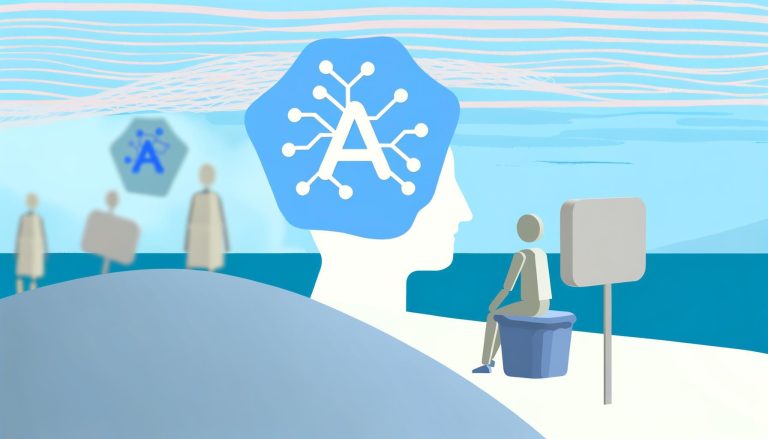Trichotillomania, often referred to as hair-pulling disorder, is a psychological condition where individuals feel compelled to pull out their hair, leading to noticeable hair loss and significant distress. While traditional treatments like cognitive-behavioral therapy (CBT) have proven effective, the integration of artificial intelligence (AI) is opening new avenues for understanding and treating this complex condition. In this article, we explore how AI is transforming the landscape for those dealing with trichotillomania.
Understanding Trichotillomania: A Brief Overview
Trichotillomania is categorized under obsessive-compulsive and related disorders in the Diagnostic and Statistical Manual of Mental Disorders (DSM-5). The condition can manifest at any age but often begins in adolescence. Symptoms include an irresistible urge to pull out hair from the scalp, eyebrows, eyelashes, or other areas, often leading to bald patches. This behavior can result in significant emotional and social distress.
Despite being relatively common, trichotillomania remains underdiagnosed and undertreated. Many sufferers feel ashamed or embarrassed, leading to delayed treatment. Advances in technology, particularly AI, are proving to be promising tools in changing this scenario.
The Role of AI in Understanding Trichotillomania
AI in Diagnosing Trichotillomania
One of the primary benefits of AI in mental health is its diagnostic capability. AI-powered algorithms can analyze vast amounts of data quickly and accurately, identifying patterns that might be missed by human evaluators. For trichotillomania, AI can:
- Analyze text entries in mental health apps to identify keywords and phrases indicating trichotillomania tendencies.
- Assess historical and real-time data from wearable devices to track hair-pulling behavior.
- Screen social media activity for signs of distress and compulsive behavior associated with hair-pulling.
AI in Personalized Treatment Plans
Personalization is key to effective treatment, and AI excels in this domain. By collecting and analyzing individual data, AI can create tailored treatment plans that adapt to the specific needs of each patient. This includes:
- Customized behavioral interventions based on the user’s history and current state.
- Adaptive mobile apps that provide real-time support and feedback.
- Virtual reality (VR) scenarios designed to simulate and help manage triggers.
AI Chatbots as Therapy Aides
AI-powered chatbots offer a significant advantage for those who might be hesitant to seek face-to-face therapy. These chatbots can:
- Provide immediate emotional support and coping strategies.
- Guide users through CBT techniques to manage hair-pulling urges.
- Track progress and adjust recommendations based on user feedback.
AI in Monitoring Progress
Consistent tracking and monitoring are vital for managing trichotillomania. AI tools like apps and wearables can automate this process, providing:
- Regular updates on the user’s progress.
- Visual data representations like graphs and charts to illustrate trends.
- Automated reminders and motivational messages to encourage adherence to treatment.
Practical Tips for Integrating AI into Trichotillomania Treatment
Finding the Right AI Tools
Choosing the right AI tools is crucial. Look for apps and devices specifically designed for mental health support. For trichotillomania, tools that offer real-time tracking and AI-driven insights will be most beneficial.
Combining AI with Traditional Therapies
While AI can significantly enhance trichotillomania treatment, it is essential to combine these technologies with traditional therapies like CBT. AI can provide additional support, but human interaction remains invaluable.
Regular Monitoring and Feedback
Consistent use of AI tools will yield the best results. Regularly engage with your chosen devices or apps, and provide feedback to ensure the AI system can learn and adapt to your needs.
Maintaining Confidentiality and Safety
Always prioritize your privacy and safety when using AI tools. Choose reputable platforms with robust data security measures, and be cautious about the personal information you share.
Benefits of Using AI in Trichotillomania Treatment
Enhanced Accessibility
One of the most significant advantages of AI in mental health is accessibility. Individuals who might otherwise avoid or delay seeking help due to stigma, cost, or geographical barriers can access supportive tools and resources conveniently.
Cost-Effective Solutions
AI tools often provide cost-effective alternatives to traditional therapy. While they should not entirely replace human therapists, they can offer supplementary support that reduces overall treatment costs.
24/7 Availability
AI-driven mental health apps and chatbots are available around the clock, providing immediate support whenever needed. This constant availability is invaluable for individuals experiencing sudden or severe urges to pull hair.
Data-Driven Insights
The data collected and analyzed by AI tools can offer invaluable insights into individual behaviors and treatment efficacy. This information helps refine treatment plans and provides a clearer understanding of progress and areas that need improvement.
Conclusion
As technology continues to advance, the integration of AI in understanding and treating trichotillomania holds great promise. AI can offer enhanced diagnostic capabilities, personalized treatment plans, and consistent monitoring and support, making it a valuable ally in the management of this challenging condition. While AI should not replace traditional therapies, it can complement them, providing 24/7 assistance, improving accessibility, and offering data-driven insights that support better outcomes.
For those struggling with trichotillomania, incorporating AI tools such as mental health apps can make a meaningful difference. By combining these technologies with established therapeutic practices, individuals can find more comprehensive and effective ways to manage their hair-pulling urges and improve their overall well-being.
If you’re looking for ways to track your moods, habits, and progress in managing trichotillomania, apps like Zenora offer features like journal entries, goal setting, and statistical analysis to support your journey. These tools can be a valuable part of your self-care routine, helping you stay on top of your mental health and personal growth.





